- Home
- Tom Clancy
The Sum of All Fears jr-7
The Sum of All Fears jr-7 Read online
The Sum of All Fears
( Jack Ryan - 7 )
Tom Clancy
Peace may finally be at hand in the Middle East — as Jack Ryan lays the groundwork for a plan that could end centuries of conflict. But ruthless terrorists have a final, desperate card to play; with one terrible act, distrust mounts, forces collide, and the floundering U.S. president seems unable to cope with the crisis.
With the world on the verge of nuclear disaster, Ryan must frantically seek a solution — before the chiefs of state lose control of themselves and the world.
Tom Clancy
The Sum of All Fears
PROLOGUE
BROKEN ARROW
“Like a wolf on the fold.” In recounting the Syrian attack on the Israeli-held Golan Heights at 1400 local time on Saturday, the 6th of October, 1973, most commentators automatically recalled Lord Byron's famous line. There is also little doubt that that is precisely what the more literarily inclined Syrian commanders had in mind when they placed the final touches on the operations plans that would hurl more tanks and guns at the Israelis than any of Hitler's vaunted panzer generals had ever dreamed of having.
However, the sheep found by the Syrian Army that grim October day were more like big-horned rams in autumn rut than the more docile kind found in pastoral verse. Outnumbered by roughly nine to one, the two Israeli brigades on the Golan were crack units. The 7th Brigade held the northern Golan and scarcely budged, its defensive network a delicate balance of rigidity and flexibility. Individual strongpoints held stubbornly, channeling the Syrian penetrations into rocky defiles, where they could be pinched off and smashed by roving bands of Israeli armor which lay in wait behind the Purple Line. By the time reinforcements began arriving on the second day, the situation was still in hand — but barely. By the end of the fourth day, the Syrian tank army that had fallen upon the 7th lay a smoking ruin before it.
The Barak (“Thunderbolt”) Brigade held the southern heights and was less fortunate. Here the terrain was less well-suited to the defense, and here also the Syrians appear to have been more ably led. Within hours the Barak had been broken into several fragments. Though each piece would later prove to be as dangerous as a nest of vipers, the Syrian spearheads were quick to exploit the gaps and race towards their strategic objective, the Sea of Galilee. The situation that developed over the next thirty-six hours would prove to be the gravest test of Israeli arms since 1948.
Reinforcements began arriving on the second day. These had to be thrown into the battle area piecemeal — plugging holes, blocking roads, even rallying units that had broken under the desperate strain of combat and, for the first time in Israeli history, fled the field before the advancing Arabs. Only on the third day were the Israelis able to assemble their armored fist, first enveloping, then smashing the three deep Syrian penetrations. The changeover to offensive operations followed without pause. The Syrians were hurled back towards their own capital by a wrathful counterattack, and surrendered a field littered with burned-out tanks and shattered men. At the end of this day the troopers of the Barak and the 7th heard over their unit radio nets a message from Israeli Defense Forces High Command.
YOU HAVE SAVED THE PEOPLE OF ISRAEL.
And so they had. Yet outside Israel, except for schools in which men learn the profession of arms, this epic battle is strangely unremembered. As in the Six Day War of 1967, the more freewheeling operations in the Sinai were the ones that attracted the excitement and admiration of the world: bridging the Suez, the Battle of the “Chinese” Farm, the encirclement of the Egyptian 3rd Army — this despite the fearful implications of the Golan fighting, which was far closer to home. Still, the survivors of those two brigades knew what they had done, and their officers could revel in the knowledge that among professional soldiers who know the measure of skill and courage that such a stand entails, their Battle for the Heights would be remembered with Thermopylae, Bastogne and Gloucester Hill.
Each war knows many ironies, however, and the October War was no exception. As is true of most glorious defensive stands, this one was largely unnecessary. The Israelis had misread intelligence reports which, had they been acted on as little as twelve hours earlier, would have enabled them to execute pre-set plans and pour reserves onto the Heights hours before the onslaught commenced. Had they done so, there would have been no heroic stand. There would have been no need for their tankers and infantrymen to die in numbers so great that it would be weeks before the true casualty figures were released to a proud, but grievously wounded nation. Had the information been acted upon, the Syrians would have been massacred before the Purple Line for all their lavish collection of tanks and guns — and there is little glory in massacres. This failure of intelligence has never been adequately explained. Did the fabled Mossad fail so utterly to discern the Arabs' plans? Or did Israeli political leaders fail to recognize the warnings they received? These questions received immediate attention in the world press, of course, most particularly in regard to Egypt 's assault-crossing of the Suez, which breached the vaunted Bar-Lev Line.
Equally serious but less well appreciated was a more fundamental error made years earlier by the usually prescient Israeli general staff. For all its firepower, the Israeli Army was not heavily outfitted with tube artillery, particularly by Soviet standards. Instead of heavy concentrations of mobile field guns, the Israelis chose to depend heavily on large numbers of short-range mortars, and attack aircraft. This left Israeli gunners on the Heights outnumbered twelve to one, subject to crushing counter-battery fire, and unable to provide adequate support to the beleaguered defenders. That error cost many lives.
As is the case with most grave mistakes, this one was made by intelligent men, for the very best of reasons. The same attack-fighter that struck the Golan could rain steel and death on the Suez as little as an hour later. The IAF was the first modern air force to pay systematic attention to “turn-around time.” Its ground crewmen were trained to act much like a racing car's pit crew, and their speed and skill effectively doubled each plane's striking power, making the IAF a profoundly flexible and weighted instrument, and making a Phantom or a Skyhawk appear to be more valuable than a dozen mobile field guns.
What the Israeli planning officers had failed to take fully into account was the fact that the Soviets were the ones arming the Arabs, and, in doing so, would inculcate their clients with their own tactical philosophies. Intended to deal with NATO air power always deemed better than their own, Soviet surface-to-air missile (SAM) designers had always been among the world's best. Russian planners saw the coming October War as a splendid chance to test their newest tactical weapons and doctrine. They did not spurn it. The Soviets gave their Arab clients a SAM network such as the North Vietnamese or Warsaw Pact forces of the time dared not dream about, a nearly solid phalanx of interlocking missile batteries and radar systems deployed in depth, along with new mobile SAMs that could advance with the armored spearheads, extending the “bubble” of counter-air protection under which ground action could continue without interference. The officers and men who were to operate those systems had been painstakingly trained, many within the Soviet Union with the full benefit of everything the Soviets and Vietnamese had learned of American tactics and technology, which the Israelis were correctly expected to imitate. Of all the Arab soldiers in the October War, only these men would achieve their pre-war objectives. For two days they effectively neutralized the IAF. Had ground operations gone according to plan, that would have been enough.
And it is here that the story has its proper beginning. The situation on the Golan Heights was immediately evaluated as serious. The scarce and confused information coming in from the two stunned brigade staffs led the Israeli High
Command to believe that tactical control of the action had been lost. It seemed that their greatest nightmare had finally occurred: they had been caught fatally unready; their northern kibbutzim were vulnerable; their civilians, their children lay in the path of a Syrian armored force that by all rights could roll down from the Heights with the barest warning. The initial reaction of the staff operations officers was something close to panic.
But panic is something that good operations officers also plan for. In the case of a nation whose enemies' avowed objective was nothing short of physical annihilation, there was no defensive measure that could be called extreme. As early as 1968, the Israelis, like their American and NATO counterparts, had based their ultimate plan on the nuclear option. At 03.55 hours, local time, on October 7th, just fourteen hours after the actual fighting began, the alert orders for OPERATION JOSHUA were telexed to the IAF base outside Beersheba.
Israel did not have many nuclear weapons at the time — and denies having any to this date. Not that many would be needed, if it came to that. At Beersheba, in one of the countless underground bomb-storage bunkers, were twelve quite ordinary-looking objects, indistinguishable from the many other items designed to be attached to tactical aircraft, except for the silver-red striped labels on their sides. No fins were attached, and there was nothing unusual in the streamlined shape of the burnished-brown aluminum skin, with barely visible seams and a few shackle points. There was a reason for that. To an unschooled or cursory observer, they might easily have been mistaken for fuel tanks or napalm canisters, and such objects hardly merit a second look. But each was a plutonium fission bomb with a nominal yield of 60 kilotons, quite enough to carve the heart out of a large city, or to kill thousands of troops in the field, or, with the addition of cobalt jackets — stored separately, but readily attachable to the external skin — to poison a landscape to all kinds of life for years to come.
On this morning, activity at Beersheba was frantic. Reserve personnel were still streaming into the base from the previous day's devotions and family-visiting all over the small country. Those men on duty had been so for too long a time for the tricky job of arming aircraft with lethal ordnance. Even the newly arriving men had had precious little sleep. One team of ordnancemen, for security reasons not told the nature of their task, was arming a flight of A-4 Skyhawk strike-fighters with nuclear weapons under the eyes of two officers, known as “watchers,” for that was their job, to keep visual track of everything that had to do with nuclear weapons. The bombs were wheeled under the centerline hardpoint of each of the four aircraft, lifted carefully by the hoisting arm, then shackled into place. The least exhausted of the groundcrew might have noticed that the arming devices and tail fins had not yet been attached to the bombs. If so they doubtless concluded that the officer assigned to that task was running late — as was nearly everything this cold and fateful morning. The nose of each weapon was filled with electronics gear. The actual exploder mechanism and capsule of nuclear material — collectively known as “the physics package”—were already in the bombs, of course. The Israeli weapons, unlike American ones, were not designed to be carried by alert aircraft during the time of peace, and they lacked the elaborate safeguards installed in American weapons by the technicians at the Pantex assembly plant, outside Amarillo, Texas. The fusing systems comprised two packages, one for attachment to the nose, and one integral with the tail fins. These were stored separately from the bombs themselves. All in all, the weapons were very unsophisticated by American or Soviet standards, in the same sense that a pistol is far less sophisticated than a machine-gun, but, at close range, equally lethal.
Once the nose and fin packages were installed and activated, the only remaining activation procedure was the installation of a special arming panel within the cockpit of each fighter, and the attachment of the power plug from the aircraft to the bomb. At that point the bomb would be “released to local control,” placed in the hands of a young, aggressive pilot, whose job was then to loft it in a maneuver called The Idiot's Loop which tossed the bomb on a ballistic path that would — probably — allow him and his aircraft to escape without harm when the bomb detonated.
Depending on the exigencies of the moment and the authorization of the “watchers,” Beersheba 's senior ordnance officer had the option to attach the arming packages. Fortunately, this officer was not at all excited about the idea of having half-live “nukes” sitting about on a flight line that some lucky Arab might attack at any moment. A religious man, for all the dangers that faced his country on that cold dawn, he breathed a silent prayer of thanks when cooler heads prevailed in Tel Aviv, and gave the order to stand JOSHUA down. The senior pilots who would have flown the strike mission returned to their squadron ready-rooms and forgot what they had been briefed to do. The senior ordnance officer immediately ordered the bombs removed, and returned to their place of safe-keeping.
The bone-tired groundcrew began removing the weapons, just as the other teams arrived on their own carts for the task of rearming the Skyhawks with Zuni rocket clusters. The strike order had been put up: The Golan. Hit the Syrian armored columns advancing on the Barak's sector of Purple Line from Kafr Shams. The ordnancemen jostled under the aircraft, two teams each trying to do their jobs, one team trying to remove bombs that they didn't know to be bombs at all, while the other hung Zunis on the wings.
There were more than four strike aircraft cycling through Beersheba, of course. The dawn's first mission over the Suez was just returning — what was left of it. The RF-4C Phantom reconnaissance aircraft had been lost, and its F-4E fighter escort limped in trailing fuel from perforated wing tanks and with one of its two engines disabled. The pilot had already radioed his warning in: there was some new kind of surface-to-air missile, maybe that new SA-6; its radar-tracking systems had not registered on the Phantom's threat-receiver; the recce bird had had no warning at all, and only luck had enabled him to evade the four targeted on his aircraft. That fact was flashed to IAF high command even before the aircraft touched down gingerly on the runway. The plane was directed to taxi down to the far end of the ramp, close to where the Skyhawks stood. The Phantom's pilot followed the jeep to the waiting fire-fighting vehicles, but just as it stopped, the left main tire blew out. The damaged strut collapsed as well and 45,000 pounds of fighter dropped to the pavement like dishes from a collapsed table. Leaking fuel ignited, and a small but deadly fire enveloped the aircraft. An instant later, 2omm ammunition from the fighter's gun pod started cooking off, and one of the two crewmen was screaming within the mass of flames. Firelighters moved in with water-fog. The two “watcher” officers were the closest, and raced towards the flames to drag the pilot clear. All three were peppered by fragments from the exploding ammunition, while a fireman coolly made his way through the flames to the second crewman and carried him out, singed but alive. Other firemen collected the watchers and the pilot, and loaded their bleeding bodies into an ambulance.
The nearby fire distracted the ordnancemen under the Skyhawks. One bomb, the one on aircraft number three, dropped a moment too soon, crushing the team supervisor's legs on the hoist. In the shrieking confusion of the moment, the team lost track of what was being done. The injured man was rushed to the base hospital while the three dismounted nuclear weapons were carted back to the storage bunker — in the chaos of an airbase on the first full day of a shooting war, the empty cradle of one of the carts somehow went unnoticed. The aircraft line chiefs arrived a moment later to begin abbreviated pre-flight checks as the jeep arrived from the ready shack. Four pilots jumped off it, each with a helmet in one hand and a tactical map in the other, each furiously eager to lash out at his country's enemies.
“What the hell's that?” snapped eighteen-year-old Lieutenant Mordecai Zadin. Called Motti by his friends, he had the gangling awkwardness of his age.
“Fuel tank, looks like,” replied the line chief. He was a reservist who owned a garage in Haifa, a kindly, competent man of fifty years.
�
�Shit,” the pilot replied, almost quivering with excitement. “I don't need extra fuel to go to the Golan and back!”
“I can take it off, but I'll need a few minutes.” Motti considered that for a moment. A sabra from a northern kibbutz, a pilot for barely five months, he saw the rest of his comrades strapping into their aircraft. Syrians were attacking towards the home of his parents, and he had a sudden horror of being left behind on his first combat mission.
“Fuck it! You can strip it off when I get back.” Zadin went up the ladder like a shot. The chief followed, strapping the pilot in place, and checking the instruments over the pilot's shoulder.
“She's ready, Motti! Be careful.”
“Have some tea for me when I get back.” The youngster grinned with all the ferocity such a child could manage. The line chief slapped him on the helmet.
“You just bring my airplane back to me, menchkin. Mazeltov.”
The chief dropped down to the concrete, and removed the ladder. He next gave the aircraft a last visual scan for anything amiss, as Motti got his engine turning. Zadin worked the flight controls and eased the throttle to full idle, checking fuel and engine-temperature gauges. Everything was where it should be. He looked over to the flight leader and waved his readiness. Motti pulled down the manual canopy, took a last look at the line chief, and fired off his farewell salute.
At eighteen, Zadin was not a particularly young pilot by IAF standards. Selected for his quick boy's reactions and aggressiveness, he'd been identified as a likely prospect four years earlier, and had fought hard for his place in the world's finest air force. Motti loved to fly, had wanted to fly ever since, as a toddler, he'd seen a Bf-109 training aircraft that an ironic fate had given Israel to start its air force. And he loved his Skyhawk. It was a pilot's aircraft. Not an electronicized monster like the Phantom, the A-4 was a small, responsive bird of prey that leaped at the twitch of his hand on the stick. Now he would fly combat. He was totally unafraid. It never occurred to him to fear for his life — like any teenager he was certain of his own immortality, and combat flyers are selected for their lack of human frailty. Yet he marked the day. Never had he seen so fine a dawn. He felt supernaturally alert, aware of everything: the rich wake-up coffee; the dusty smell of the morning air at Beersheba; now the manly scents of oil and leather in the cockpit; the idle static on his radio circuits; and the tingle of his hands on the control stick. He had never known such a day and it never occurred to Motti Zadin that fate would not give him another.

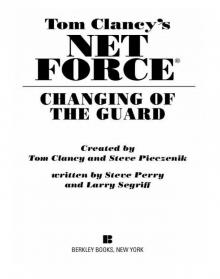 Changing of the Guard
Changing of the Guard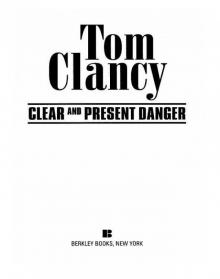 Clear and Present Danger
Clear and Present Danger Hounds of Rome
Hounds of Rome Breaking Point
Breaking Point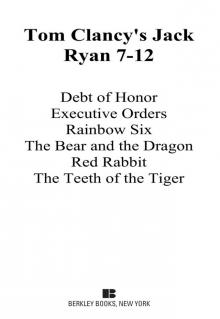 Tom Clancy's Jack Ryan Books 7-12
Tom Clancy's Jack Ryan Books 7-12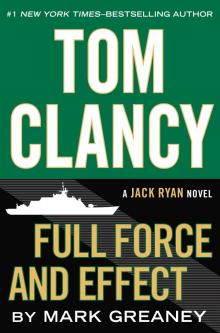 Full Force and Effect
Full Force and Effect The Archimedes Effect
The Archimedes Effect Combat Ops
Combat Ops Into the Storm: On the Ground in Iraq
Into the Storm: On the Ground in Iraq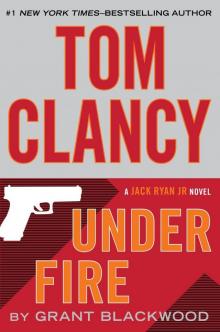 Under Fire
Under Fire Point of Impact
Point of Impact Red Rabbit
Red Rabbit Rainbow Six
Rainbow Six The Hunt for Red October
The Hunt for Red October The Teeth of the Tiger
The Teeth of the Tiger Conviction (2009)
Conviction (2009)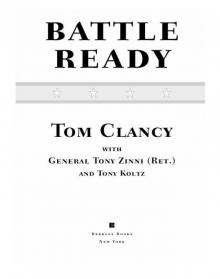 Battle Ready
Battle Ready Patriot Games
Patriot Games The Sum of All Fears
The Sum of All Fears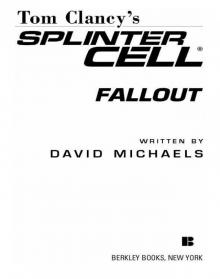 Fallout (2007)
Fallout (2007) Red Storm Rising
Red Storm Rising The Cardinal of the Kremlin
The Cardinal of the Kremlin Executive Orders
Executive Orders Lincoln, the unknown
Lincoln, the unknown Threat Vector
Threat Vector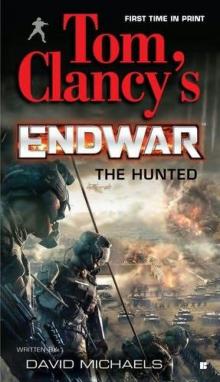 The Hunted
The Hunted Shadow Warriors: Inside the Special Forces
Shadow Warriors: Inside the Special Forces End Game
End Game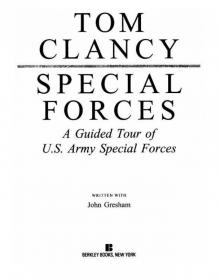 Special Forces: A Guided Tour of U.S. Army Special Forces
Special Forces: A Guided Tour of U.S. Army Special Forces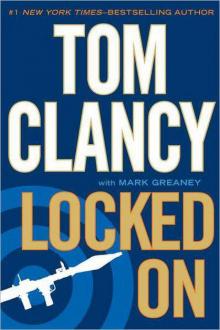 Locked On
Locked On Line of Sight
Line of Sight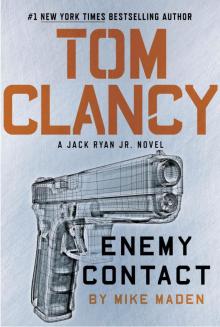 Tom Clancy Enemy Contact - Mike Maden
Tom Clancy Enemy Contact - Mike Maden Fighter Wing: A Guided Tour of an Air Force Combat Wing
Fighter Wing: A Guided Tour of an Air Force Combat Wing Springboard
Springboard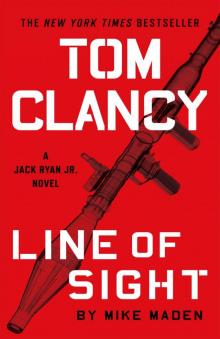 Line of Sight - Mike Maden
Line of Sight - Mike Maden EndWar
EndWar Dead or Alive
Dead or Alive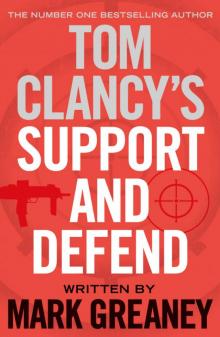 Tom Clancy Support and Defend
Tom Clancy Support and Defend Checkmate
Checkmate Command Authority
Command Authority Carrier: A Guided Tour of an Aircraft Carrier
Carrier: A Guided Tour of an Aircraft Carrier Blacklist Aftermath
Blacklist Aftermath Marine: A Guided Tour of a Marine Expeditionary Unit
Marine: A Guided Tour of a Marine Expeditionary Unit Commander-In-Chief
Commander-In-Chief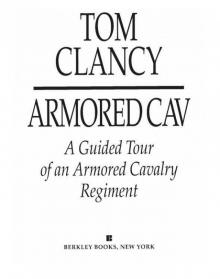 Armored Cav: A Guided Tour of an Armored Cavalry Regiment
Armored Cav: A Guided Tour of an Armored Cavalry Regiment Tom Clancy's Jack Ryan Books 1-6
Tom Clancy's Jack Ryan Books 1-6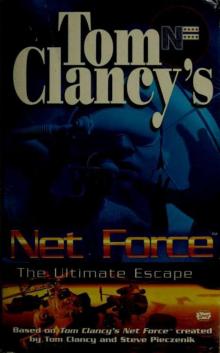 The Ultimate Escape
The Ultimate Escape Airborne: A Guided Tour of an Airborne Task Force
Airborne: A Guided Tour of an Airborne Task Force Debt of Honor
Debt of Honor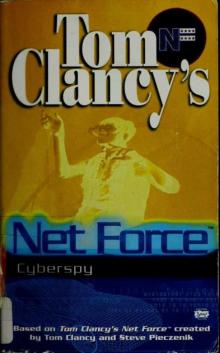 Cyberspy
Cyberspy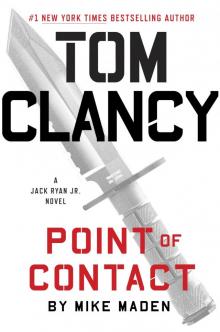 Point of Contact
Point of Contact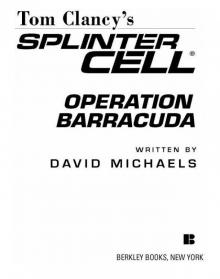 Operation Barracuda (2005)
Operation Barracuda (2005)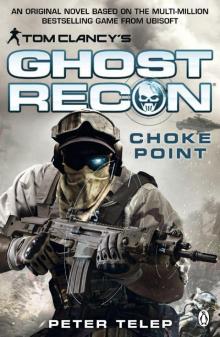 Choke Point
Choke Point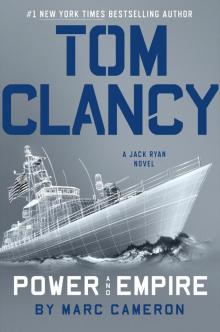 Power and Empire
Power and Empire Every Man a Tiger: The Gulf War Air Campaign
Every Man a Tiger: The Gulf War Air Campaign Endgame (1998)
Endgame (1998) EndWar: The Missing
EndWar: The Missing Splinter Cell (2004)
Splinter Cell (2004) The Great Race
The Great Race True Faith and Allegiance
True Faith and Allegiance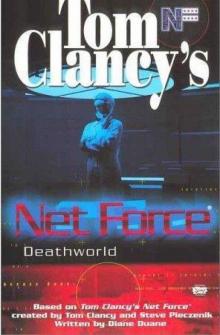 Deathworld
Deathworld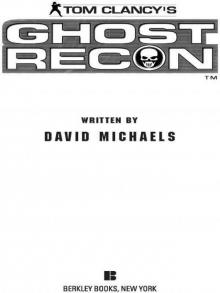 Ghost Recon (2008)
Ghost Recon (2008)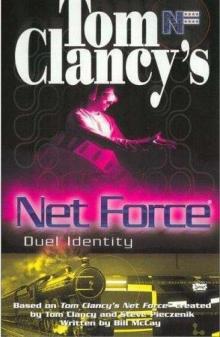 Duel Identity
Duel Identity Line of Control o-8
Line of Control o-8 The Hunt for Red October jr-3
The Hunt for Red October jr-3 Hidden Agendas nf-2
Hidden Agendas nf-2 Acts of War oc-4
Acts of War oc-4 Ruthless.Com pp-2
Ruthless.Com pp-2 Night Moves
Night Moves The Hounds of Rome - Mystery of a Fugitive Priest
The Hounds of Rome - Mystery of a Fugitive Priest Into the Storm: On the Ground in Iraq sic-1
Into the Storm: On the Ground in Iraq sic-1 Threat Vector jrj-4
Threat Vector jrj-4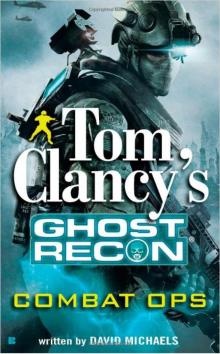 Combat Ops gr-2
Combat Ops gr-2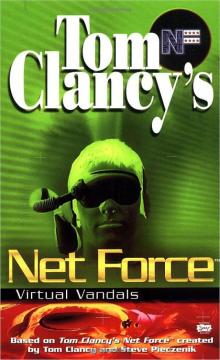 Virtual Vandals nfe-1
Virtual Vandals nfe-1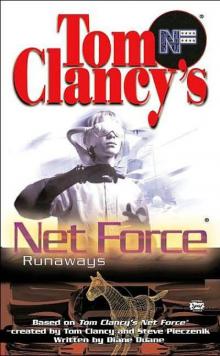 Runaways nfe-16
Runaways nfe-16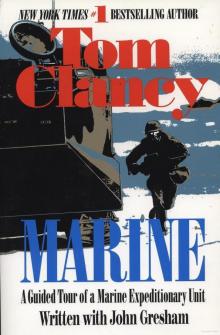 Marine: A Guided Tour of a Marine Expeditionary Unit tcml-4
Marine: A Guided Tour of a Marine Expeditionary Unit tcml-4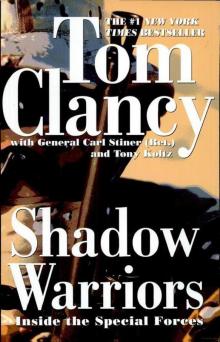 Shadow Warriors: Inside the Special Forces sic-3
Shadow Warriors: Inside the Special Forces sic-3 Jack Ryan Books 1-6
Jack Ryan Books 1-6 Cold Case nfe-15
Cold Case nfe-15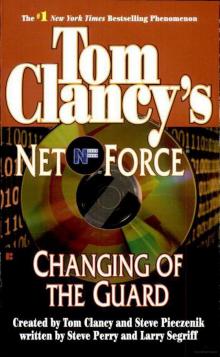 Changing of the Guard nf-8
Changing of the Guard nf-8 Splinter Cell sc-1
Splinter Cell sc-1 Battle Ready sic-4
Battle Ready sic-4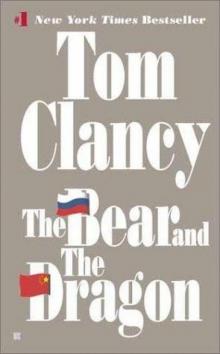 The Bear and the Dragon jrao-11
The Bear and the Dragon jrao-11 Fighter Wing: A Guided Tour of an Air Force Combat Wing tcml-3
Fighter Wing: A Guided Tour of an Air Force Combat Wing tcml-3 Patriot Games jr-1
Patriot Games jr-1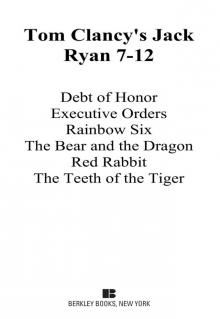 Jack Ryan Books 7-12
Jack Ryan Books 7-12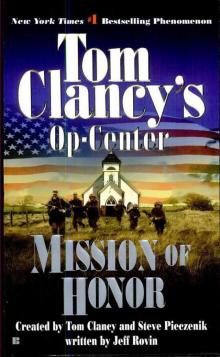 Mission of Honor o-9
Mission of Honor o-9 Private Lives nfe-9
Private Lives nfe-9 Operation Barracuda sc-2
Operation Barracuda sc-2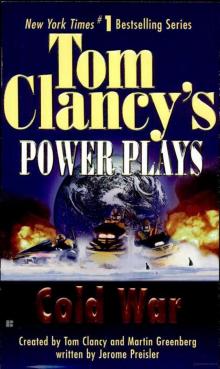 Cold War pp-5
Cold War pp-5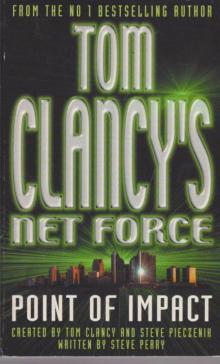 Point of Impact nf-5
Point of Impact nf-5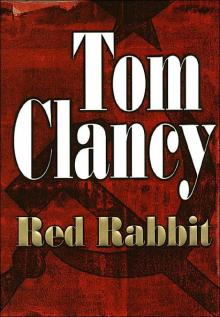 Red Rabbit jr-9
Red Rabbit jr-9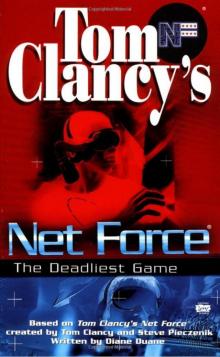 The Deadliest Game nfe-2
The Deadliest Game nfe-2 Springboard nf-9
Springboard nf-9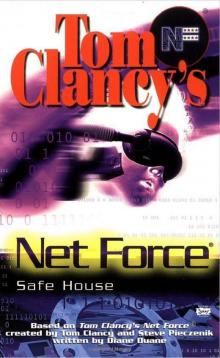 Safe House nfe-10
Safe House nfe-10 EndWar e-1
EndWar e-1 Duel Identity nfe-12
Duel Identity nfe-12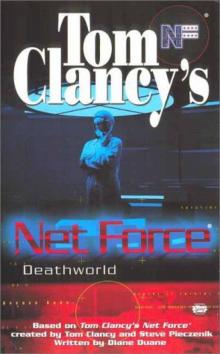 Deathworld nfe-13
Deathworld nfe-13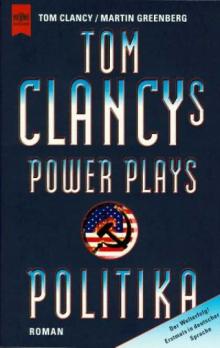 Politika pp-1
Politika pp-1 Rainbow Six jr-9
Rainbow Six jr-9 Tom Clancy's Power Plays 1 - 4
Tom Clancy's Power Plays 1 - 4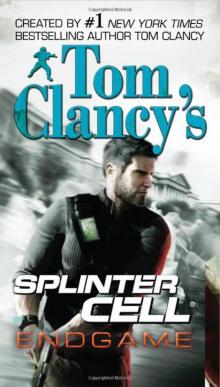 Endgame sc-6
Endgame sc-6 Executive Orders jr-7
Executive Orders jr-7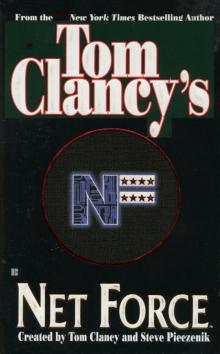 Net Force nf-1
Net Force nf-1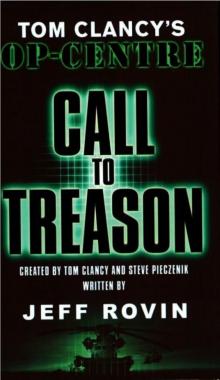 Call to Treason o-11
Call to Treason o-11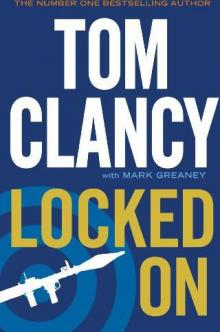 Locked On jrj-3
Locked On jrj-3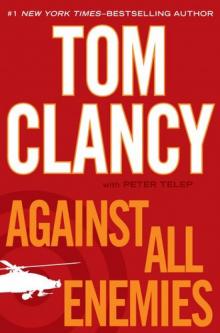 Against All Enemies
Against All Enemies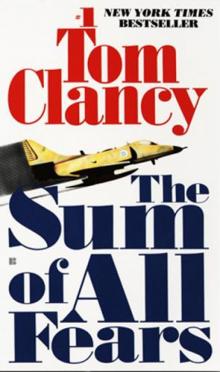 The Sum of All Fears jr-7
The Sum of All Fears jr-7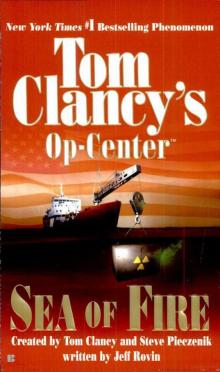 Sea of Fire o-10
Sea of Fire o-10 Fallout sc-4
Fallout sc-4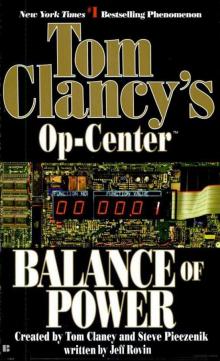 Balance of Power o-5
Balance of Power o-5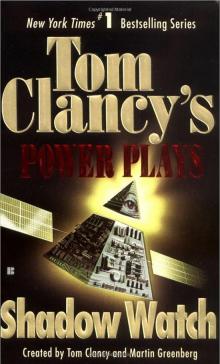 Shadow Watch pp-3
Shadow Watch pp-3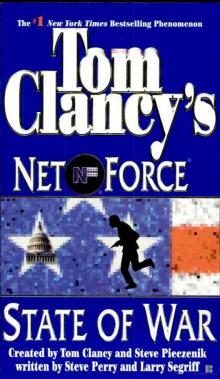 State of War nf-7
State of War nf-7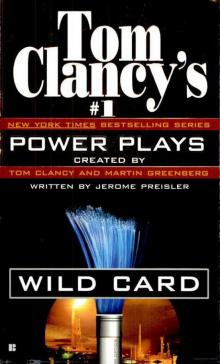 Wild Card pp-8
Wild Card pp-8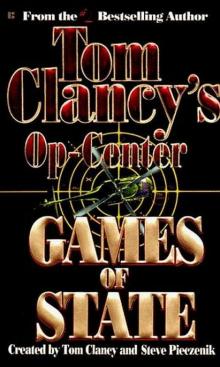 Games of State o-3
Games of State o-3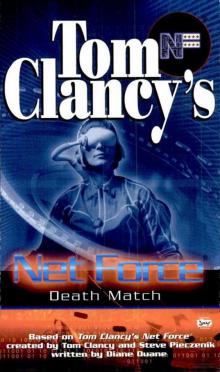 Death Match nfe-18
Death Match nfe-18 Against All Enemies mm-1
Against All Enemies mm-1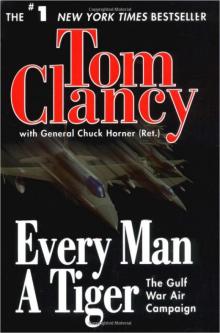 Every Man a Tiger: The Gulf War Air Campaign sic-2
Every Man a Tiger: The Gulf War Air Campaign sic-2 Cybernation nf-6
Cybernation nf-6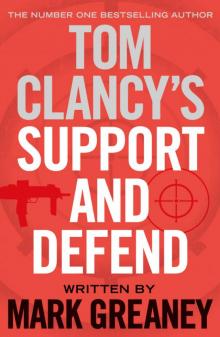 Support and Defend
Support and Defend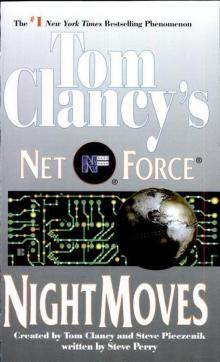 Night Moves nf-3
Night Moves nf-3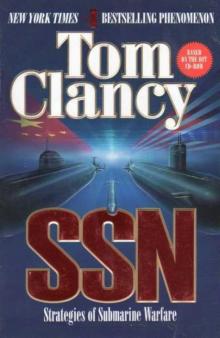 SSN
SSN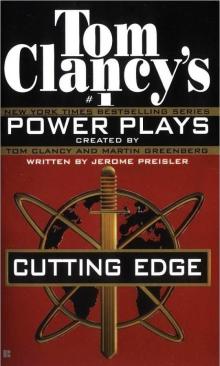 Cutting Edge pp-6
Cutting Edge pp-6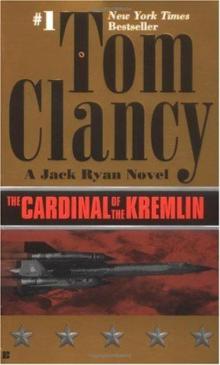 The Cardinal of the Kremlin jrao-5
The Cardinal of the Kremlin jrao-5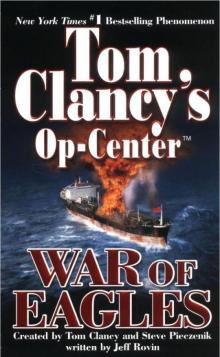 War of Eagles o-12
War of Eagles o-12 Op-Center o-1
Op-Center o-1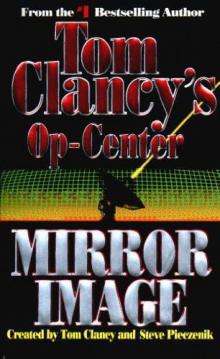 Mirror Image o-2
Mirror Image o-2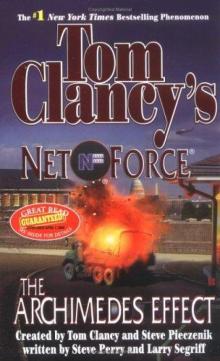 The Archimedes Effect nf-10
The Archimedes Effect nf-10 Teeth of the Tiger jrj-1
Teeth of the Tiger jrj-1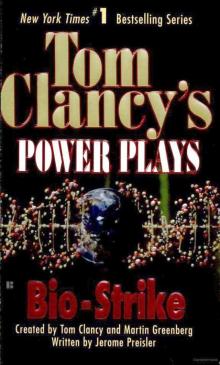 Bio-Strike pp-4
Bio-Strike pp-4 State of Siege o-6
State of Siege o-6 Debt of Honor jr-6
Debt of Honor jr-6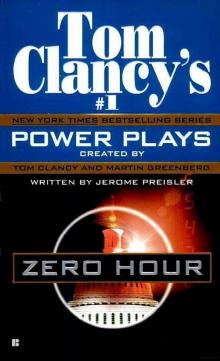 Zero Hour pp-7
Zero Hour pp-7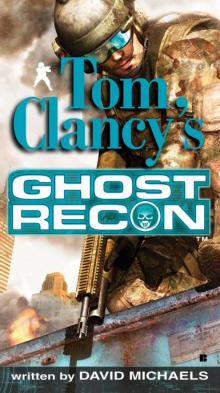 Ghost Recon gr-1
Ghost Recon gr-1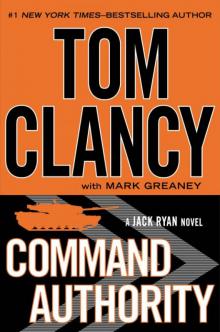 Command Authority jr-10
Command Authority jr-10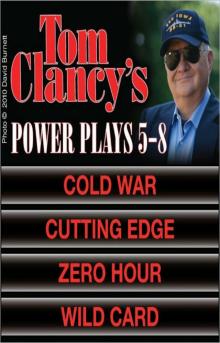 Tom Clancy's Power Plays 5 - 8
Tom Clancy's Power Plays 5 - 8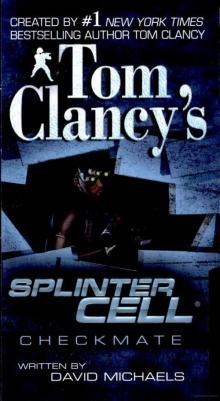 Checkmate sc-3
Checkmate sc-3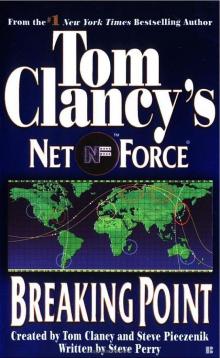 Breaking Point nf-4
Breaking Point nf-4 Gameprey nfe-11
Gameprey nfe-11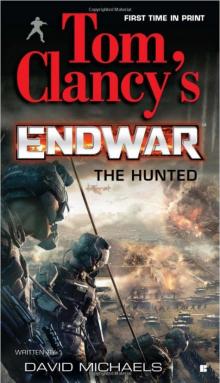 The Hunted e-2
The Hunted e-2 Hidden Agendas
Hidden Agendas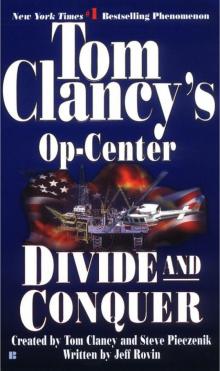 Divide and Conquer o-7
Divide and Conquer o-7